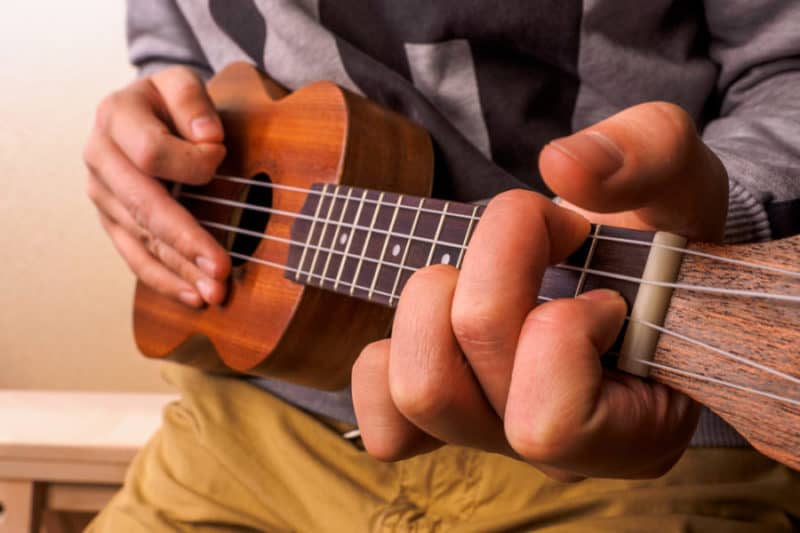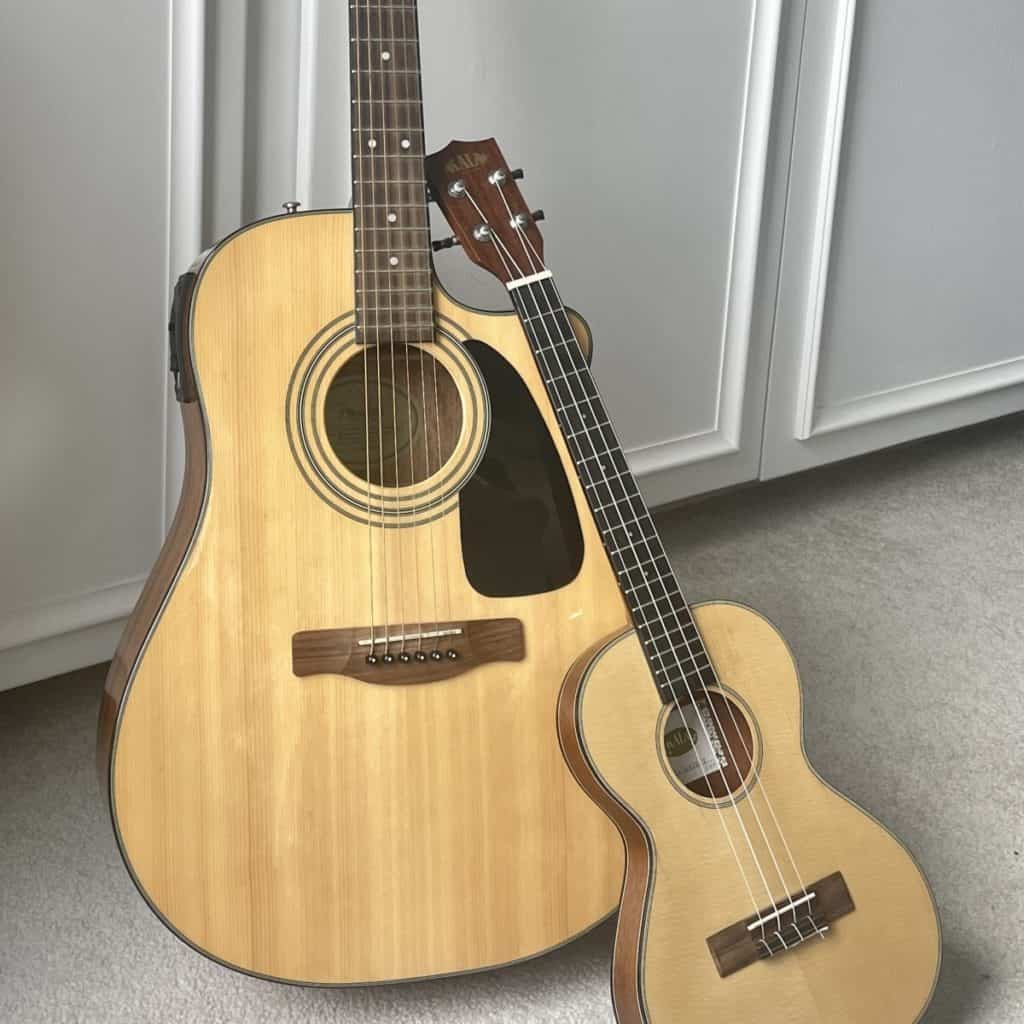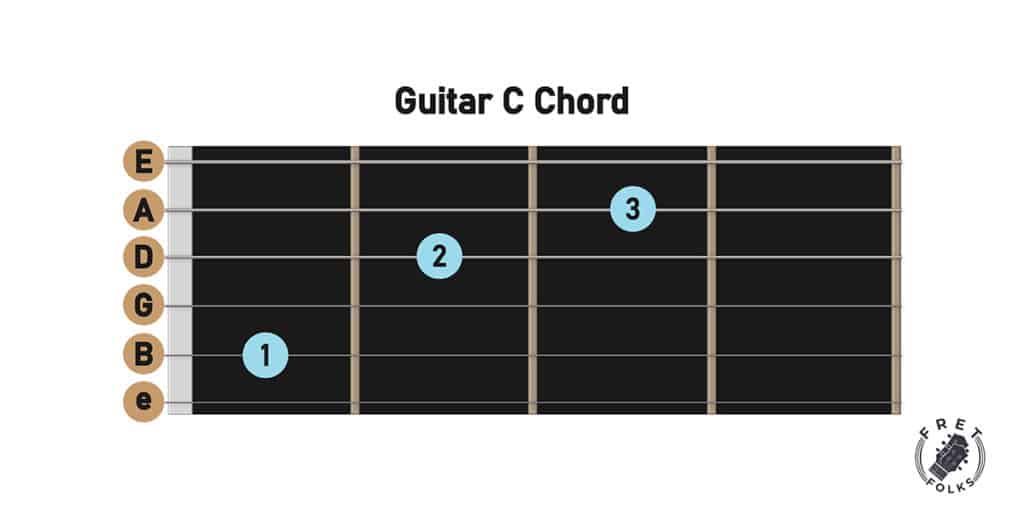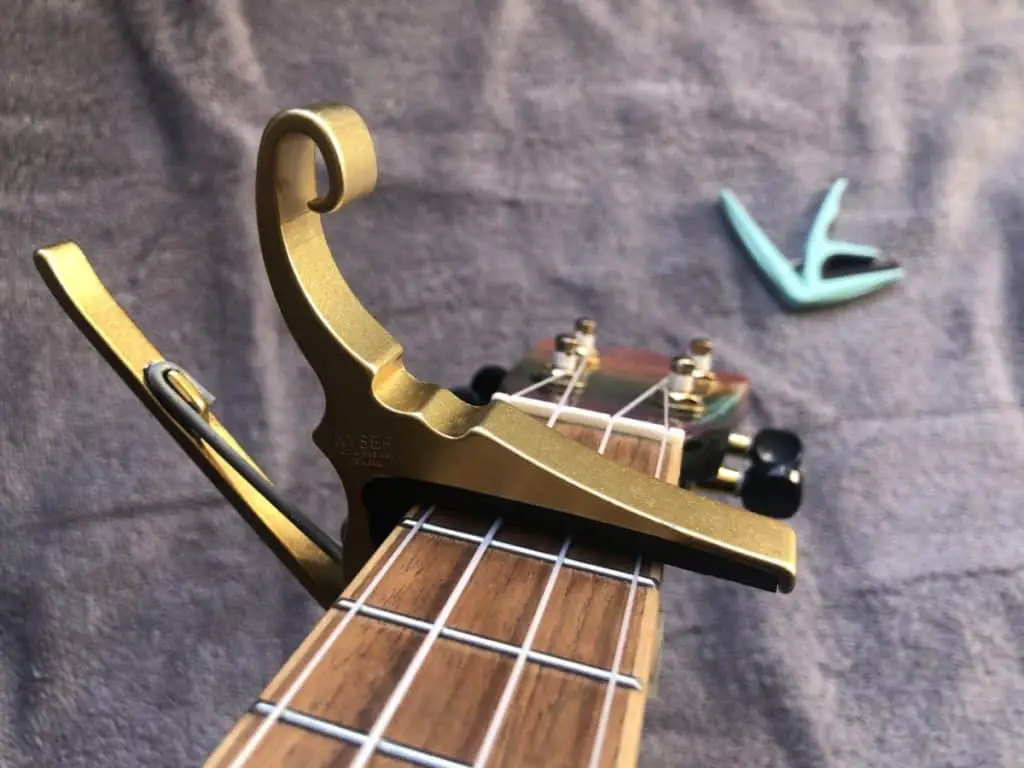Today I am going to explain what key ukulele is in. As someone who has taught ukulele lessons and spent years studying music theory, I have a strong opinion about this.
Let’s take a closer look at the standard tuning for a soprano ukulele and how this relates to the concept of musical keys.
The Key Ukuleles are In
A soprano ukulele in its standard tuning is in the Key of C, and can be referred to as a “C instrument.” In fact, this standard tuning is referred to as “C tuning.” The notes G-C-E-A form a C major-sixth chord and all belong to the key of C.
Also, ukulele sheet music is written in concert key, meaning that it is not transposed like some instruments such as a (Bb) trumpet.

Is Ukulele Considered a C Instrument?
It is safe to consider ukulele a C instrument. When an instrument is considered to be in a certain key that determination is usually based on one of two things.
The first thing to consider is whether the instrument is a transposing instrument. Meaning that its sheet music is written in a key other than how that music is supposed to sound.
For example, a standard Bb trumpet will sound in the key of C if it is reading the key of D. This is not that case for ukulele, so the ukulele is said to be in “concert key.”
The other thing to consider is if the instrument is referred to by its tuning. Since the ukulele is also tuned to a C tuning, again, we can safely say that it is a C instrument.
Is a Ukulele in the Same Key as a Guitar?

Ukulele is tuned to a C tuning and standard guitar tuning is an E tuning, so ukulele is not in the same key as guitar. However the chords do function the same, meaning a C chord on the ukulele has the same notes as a C chord on guitar.
With that said, the tunings of these two instruments are significantly different. So a musician cannot use the same chord shapes for both. For example, here is how a C chord is played on both instruments…


However, since both instruments are in concert key, a ukulele player can read chord symbols from a guitar chart (sheet music) and vice versa.
Are Ukulele Chords the Same as Piano Chords?
Ukulele chords are the same as piano chords in that a C chord on ukulele will function the same as a C chord on piano, with no transposition needed.
However, the piano has a much wider range of notes and more options when it comes to the way the chord is voiced.
A piano player can read chord symbols from a ukulele chart and vise versa. This is a great thing to keep in mind if you are working on duets.
What Different Keys Can Ukulele Play In?
Since ukulele is a chromatic instrument, it can play in any key. That being said, certain keys will be easier than others. As you study the ukulele, you will find that certain melodies are only accessible in certain keys, and that certain melodies play with greater ease in certain keys.
The range of a melody is the distance (measurable in semitones or “half-steps”) from the lowest note of the melody to the highest note.
The range of a particular melody will influence which keys you may play that melody in. A melody with a small range will be playable in many, or all keys, whereas a melody with a wide range will generally fit into fewer keys.
What are The Easiest Keys to Play on Ukulele?
Since the open strings of a ukulele all play natural notes, it is easiest to play in C, and keys with few sharps or flats. Keys such as C, G, D, and F are typically pretty natural keys to play in.
What about Baritone Ukulele? Is it in a Different Key?
The baritone ukulele uses a G tuning. The open strings are D-G-B-E. These notes all fit into a G major scale and for a G major-sixth chord. If you use soprano ukulele fingerings on a Baritone ukulele, everything you play will sound a fourth lower than if you had played it on a soprano ukulele.
How Does a Capo Change the Key of a Ukulele?

A capo holds the strings down against a certain fret. If you use a capo at the first fret, your open notes will be Ab-Db-F-Bb. The best use for this is to shift your open chord shapes up one fret. In this manner, you can use familiar shapes to access new chords.
Note that the capo does not change the pitch of notes higher than the capo. For example, if the capo is on the first fret, the second fret on the C string is still D. So the capo has not really changed the key of the entire instrument.